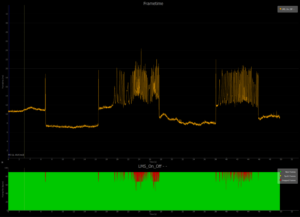At the Game Developers’ Conference, Nvidia has released a new version of its FCAT (Frame Capture Analysis Tool) that is specifically designed to help developers to understand the performance of VR apps and how to optimised them for VR. There are three key components:
- the VR Capture tool connects into the render pipeline and captures performance metrics
- the VR Analyser tool takes data from the Capture tool and processes it to form graphs and metrics.
- the VR Overlay tries to give a user wearing a headset a visual reference on application performance from within.
Dropped frames can cause stuttering for users and systems will produce synthesized frames if the rendering system can’t provide enough real frames. That’s better than nothing, but not as good as real frames.
Analyst Comment
This kind of tool can be very helpful for developers to understand what they need to do to make a good VR application. Better understanding can also help the pipeline to develop, potentially reducing the minimum hardware requirements needed for a specific piece of hardware, as HTC has been able to do. That helps the market by reducing the barrier to entry for users. VR systems need to keep the graphics as closely in sync with reality as possible, so the rendering pipeline needs to compare the output with information from sensors to ensure there is not too much lag. (BR)
Nvidia’s FCAT VR Analyzing Results

